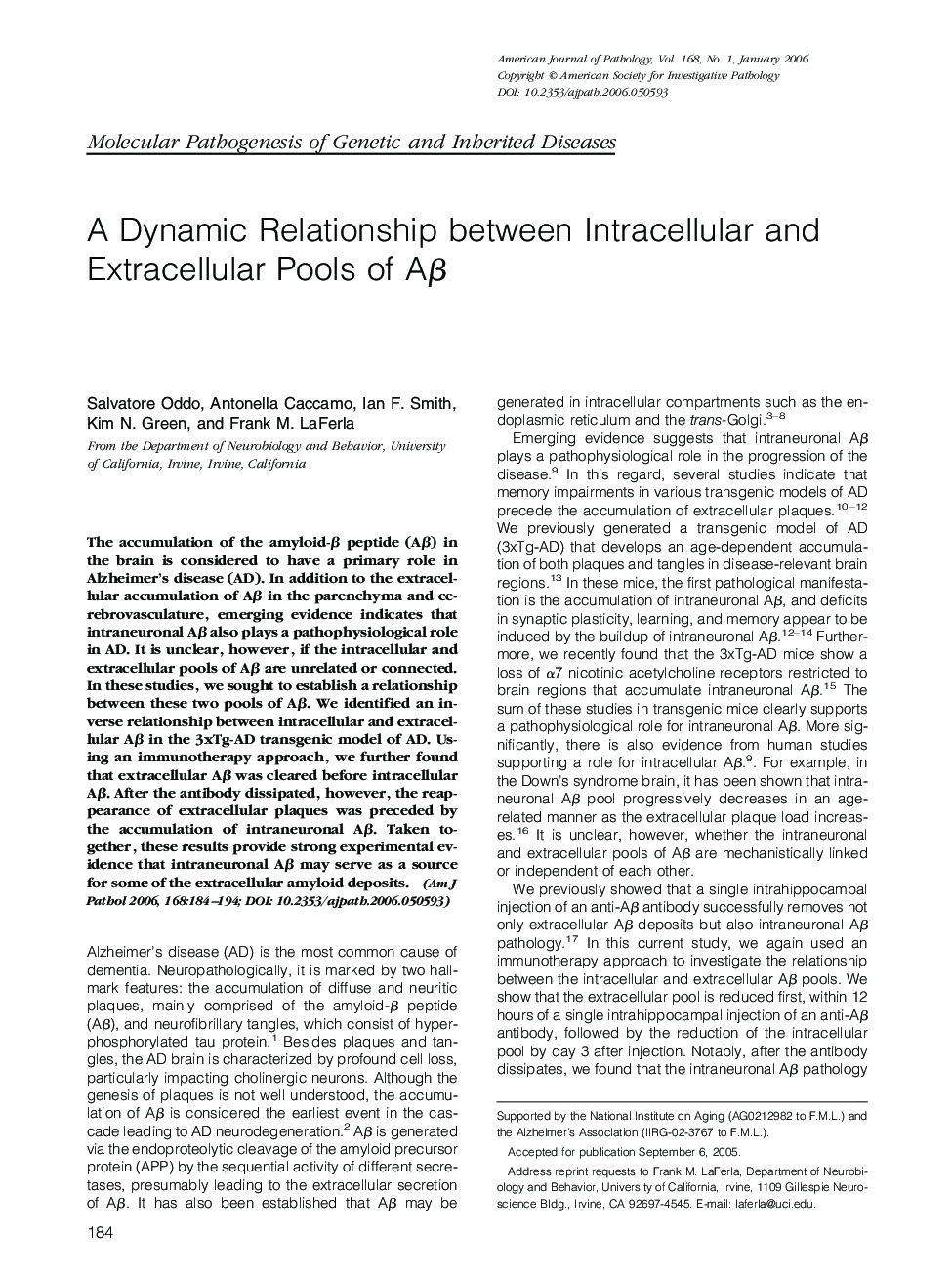| Article ID | Journal | Published Year | Pages | File Type |
|---|---|---|---|---|
| 5940241 | The American Journal of Pathology | 2006 | 11 Pages |
Abstract
The accumulation of the amyloid-β peptide (Aβ) in the brain is considered to have a primary role in Alzheimer's disease (AD). In addition to the extracellular accumulation of Aβ in the parenchyma and cerebrovasculature, emerging evidence indicates that intraneuronal Aβ also plays a pathophysiological role in AD. It is unclear, however, if the intracellular and extracellular pools of Aβ are unrelated or connected. In these studies, we sought to establish a relationship between these two pools of Aβ. We identified an inverse relationship between intracellular and extracellular Aβ in the 3xTg-AD transgenic model of AD. Using an immunotherapy approach, we further found that extracellular Aβ was cleared before intracellular Aβ. After the antibody dissipated, however, the reappearance of extracellular plaques was preceded by the accumulation of intraneuronal Aβ. Taken together, these results provide strong experimental evidence that intraneuronal Aβ may serve as a source for some of the extracellular amyloid deposits.
Related Topics
Health Sciences
Medicine and Dentistry
Cardiology and Cardiovascular Medicine
Authors
Salvatore Oddo, Antonella Caccamo, Ian F. Smith, Kim N. Green, Frank M. LaFerla,
